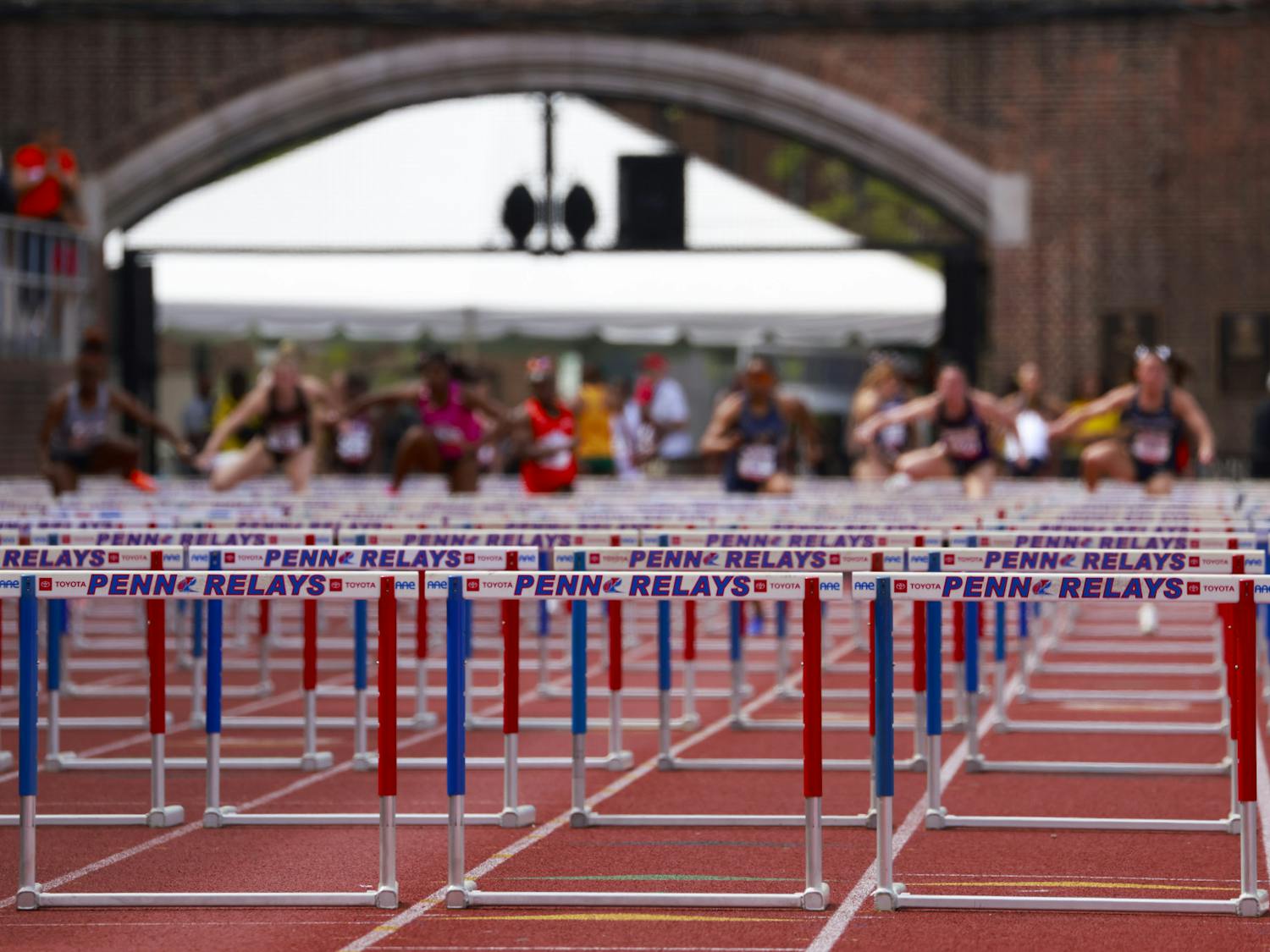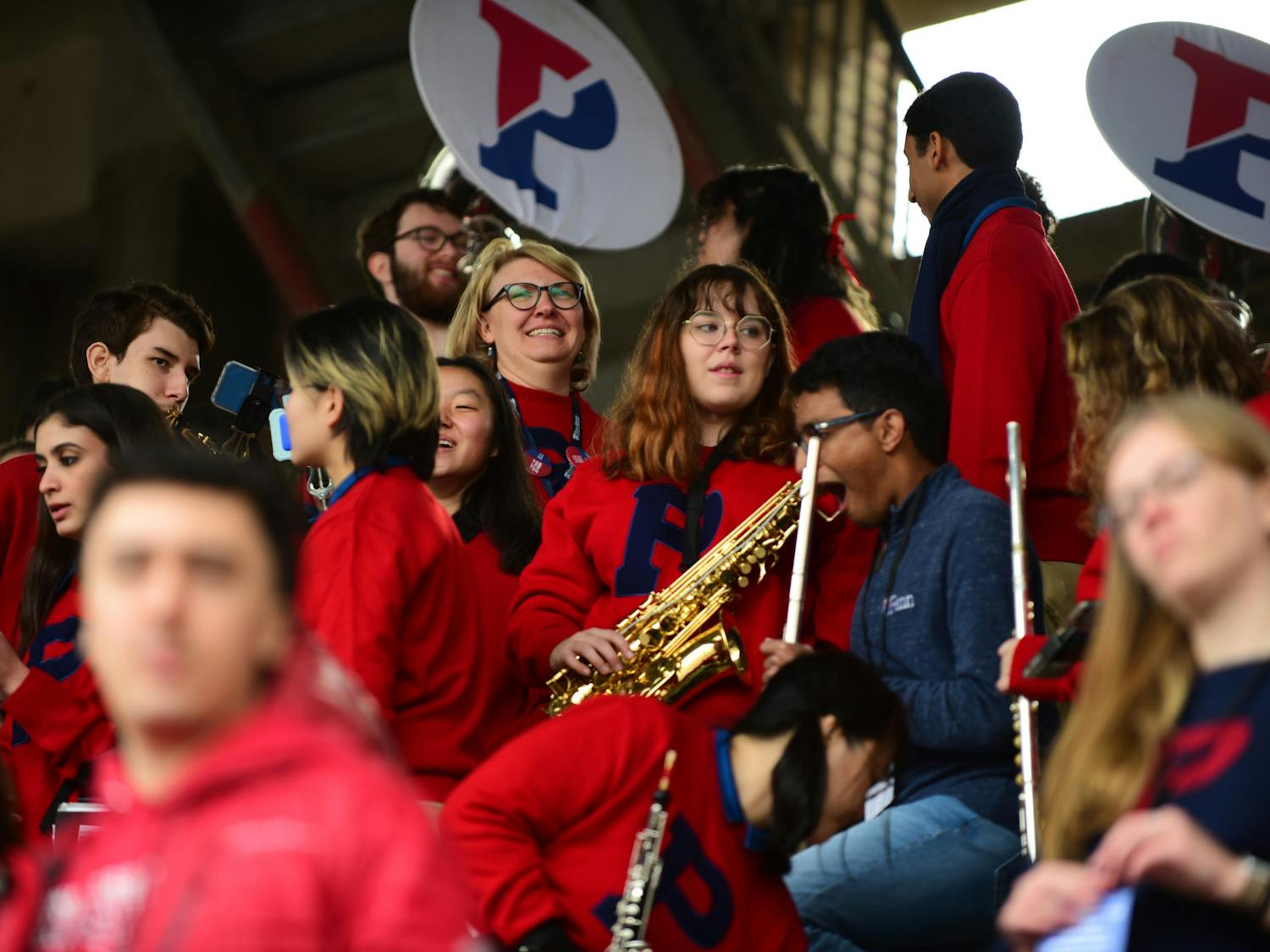Most students would have difficulty balancing one varsity season and a workload at Penn — track and field athletes have to manage two.
From early December until late March, the men’s and women’s track teams compete in their indoor seasons, culminating in the Ivy League Heptagonal and Eastern College Athlete Conference Championships.
The Quakers begin the outdoor season after just a week off, continuing to compete until early June and concluding with the NCAA Championships in Des Moines, Iowa.
In a sense, indoor track is a warmup for the outdoor season, when athletes are trying to hit their best times.
However, the difference in seasons should not be mistaken as simply running outside as opposed to inside. Training patterns, weather conditions and subtle distinctions lead to large differences in results.
“Personally, I like indoor track better because you aren’t depending on the weather because track is a very condition-dependent sport,” sophomore hurdler and sprinter Gabrielle Piper said. “A bad weather day could easily adversely affect times.”
Additionally, most indoor tracks differ greatly from outdoor tracks. Indoor tracks are banked and are usually only 200 meters as opposed to the 400-meter outdoor track.
“In practice, we do longer repeats. For example, during indoor season, I have to hurdle over five hurdles,” Piper explained. “During outdoor season, that number doubles to 10.”
Training for two completely different tracks is a burden track athletes must undertake, and the transition must be seamless.
“In the transitory period, coach [Gwen Harris] bumps our lifts back up to conditioning,” Piper explained. “The end of indoor is usually the championship meets and so we don’t lift too much during that period.”
Harris echoed Piper’s sentiments.
“We’re starting to get back into the scheme of things because we haven’t lifted significantly for two weeks since we taper it off for championships — probably only once a week,” she said. “Now they are starting to lift two and three times a week.”
However, building the body back up for a completely different race is neither an easy nor rapid process. Track athletes must deal with the changing practices, different tracks and the time off from spring break, which divides the two seasons.
“We’re competing right now, but the bodies aren’t as fresh as we’d like them to be,” Harris said.
It is important not to discount the presence of the self-fulfilling prophecy for athletes.
“I felt I had a pretty strong indoor season,” Piper recalled. “I tend to do better in indoor track because the events are shorter and coming from Georgia, I’ve grown accustomed to good weather when running.”
While there are more obvious X factors such as weather and different competing grounds, there are also some less recognizable factors that come into play for athletes.
“One thing I enjoy about outdoor season [is] we don’t have to travel as much,” Piper admitted. “At Penn, we don’t have an indoor track. However … Franklin Field is one of the best tracks in the nation, and so we have a lot of home meets.”
Running at home certainly has its advantages for the Red and Blue as well.
“My friends can come to the meets, I’m not stressed from missing classes and rescheduling exams and I have home field advantage,” Piper said.
Regardless of their preferences or external factors, athletes on the track teams must compete and excel in both indoor and outdoor competition.
And in case two varsity seasons weren’t enough, there’s always cross country in the fall.








